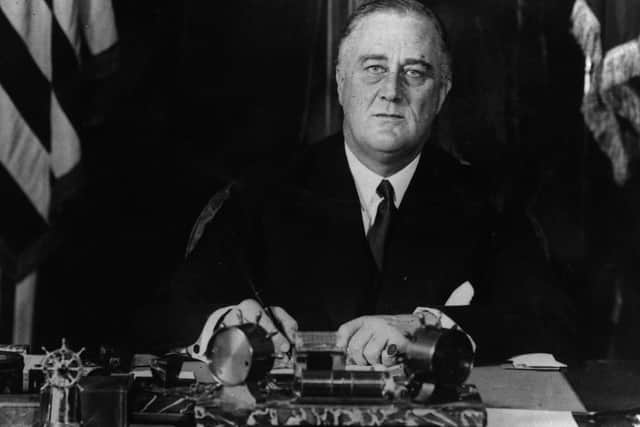American banks re-open after recent financial crisis (1933)
and live on Freeview channel 276
“There was no excitement, and there were no extra guards on duty at the majority of the banks. Some of the banks are restricting withdrawals, and the first reports indicate that as much money is being returned to the banks as is being withdrawn,” reported the News Letter.
It continued: “The most important of the restrictions that will continue in force involve the prohibition of the paying out of gold certificates and restriction of foreign exchange dealings.”
Advertisement
Hide AdAdvertisement
Hide AdIn New York alone 135 institutions had re-opened, although it was noted “it is not yet known when the Stock Exchange will re-open”. Meanwhile, The First National Bank in Chicago had opened with 70,000,000 dollars of currency, “ten times the amount in normal times”.


Mr Fred I Kent, a prominent New York banker, had been created “foreign exchange dictator” and he was to immediately establish a central office for the control of the dollar exchange.
An assurance that the banks which that re-opened would meet “all needs” was given to the American people by President Roosevelt when he broadcast from White House “a simple explanation of what has been achieved in the banking crisis”.
President Roosevelt hit out at “some bankers either incompetent or dishonest in their handling of other people's funds”.
Advertisement
Hide AdAdvertisement
Hide AdHe said: “I don't promise you that every bank will re-open or that individual losses will not be suffered, but there will be no losses that could possibly be avoided, and these would have been more and greater losses had we continued to drift.”
He added: “More important than gold is confidence. You people must have faith. You mustn't be stampeded by rumours or guesses. It is your problem no less than it is mine; together we cannot fail.”
Mr George Morris, Governor of the Philadelphia Federal Reserve Bank, appealing for public confidence, said: “It is to be hoped that the people will display the same spirit as the English people showed after they had suffered the extreme shock of having the Bank of England suspend gold payments.”
Following the decision of the London Committee of Foreign Exchange Bankers at the Westminster Bank dealings in American dollars had also resumed in London.
Advertisement
Hide AdAdvertisement
Hide AdDealers in Paris, Berlin, Amsterdam and other Continental centres resumed dealings at the same time as London and New York. When dealings opened at 2.30pm (Monday, March 13, 1933) in London the New York cable rate was 3.44¾ dollars to the pound. The English pound in New York, according to the opening rate, was thus 14s 1½ d.
The News Letter noted: “The market took some time to settle down, and great interest was shown, foreign exchange brokers being kept busy with inquiries.”